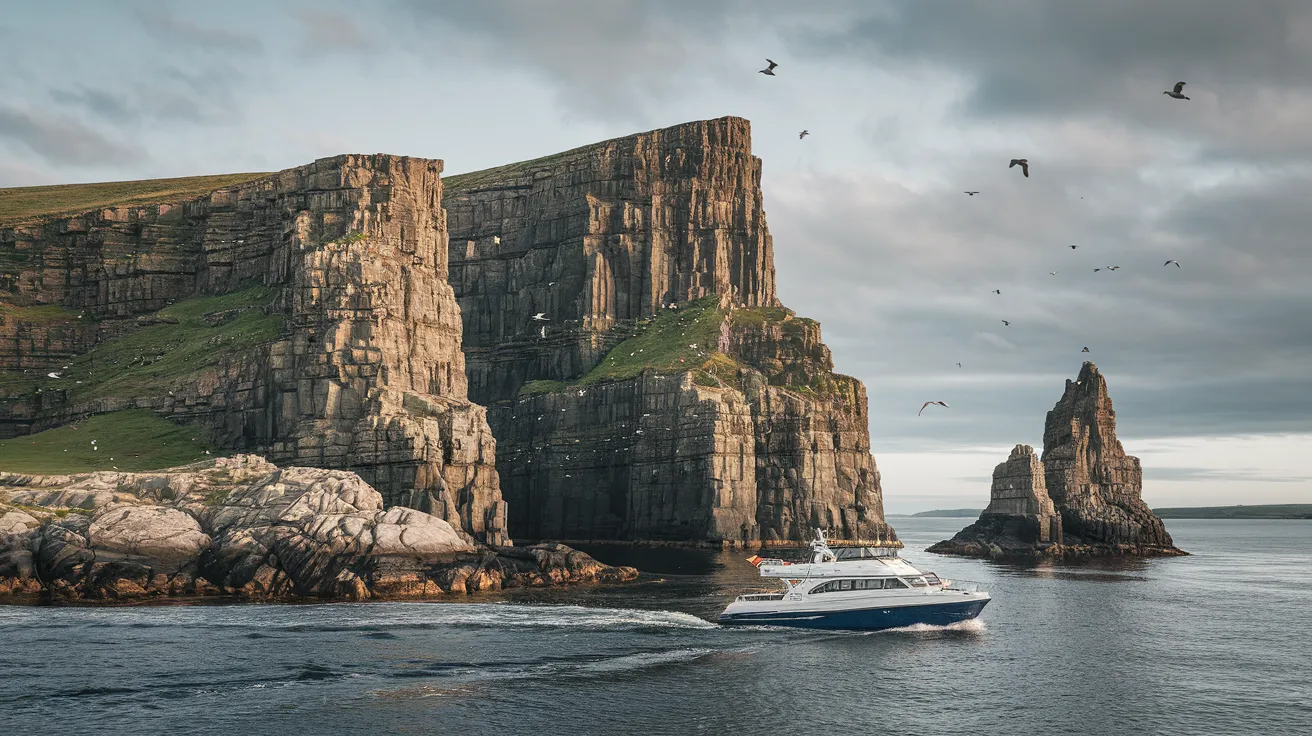Quick Navigation
- Understanding the Simmer Dim
- Neolithic Sites and Solstice Alignments
- Where to Witness the Midsummer Magic
- Traditions and Celebrations
- Folklore of the Long Light
- Tips for Your Solstice Visit
- Frequently Asked Questions
- What exactly is the Simmer Dim?
- When is the best time to experience it?
- Are there official events at the Ring of Brodgar for the solstice?
- Does it ever get completely dark in Orkney in summer?
- Is the St Magnus Festival always during the solstice?
There's a unique magic to Orkney during midsummer. As the longest day approaches, the islands bask in an ethereal, near-constant twilight known locally as the 'Simmer Dim'. This period, culminating around the Summer Solstice, offers an extraordinary opportunity to connect with Orkney's ancient landscapes, witness stunning light phenomena, and perhaps even glimpse the folklore woven into these long, luminous nights. Forget true darkness; prepare for weeks where the sun merely dips below the horizon, painting the sky in prolonged hues of gold, pink, and violet.
Understanding the Simmer Dim
Why does Orkney experience this extended twilight? Situated at roughly 59° North latitude, the islands are close enough to the Arctic Circle that during the weeks surrounding the Summer Solstice (around June 21st), the sun never gets far enough below the horizon for complete darkness to fall. Instead, the sky remains illuminated by scattered sunlight, creating a soft, ambient glow that can last throughout the 'night'. This phenomenon, the Simmer Dim, typically stretches from mid-May to mid-July, with the longest day boasting almost 19 hours of daylight. It's a time when the usual boundaries between day and night blur, lending a mystical quality to the landscape.
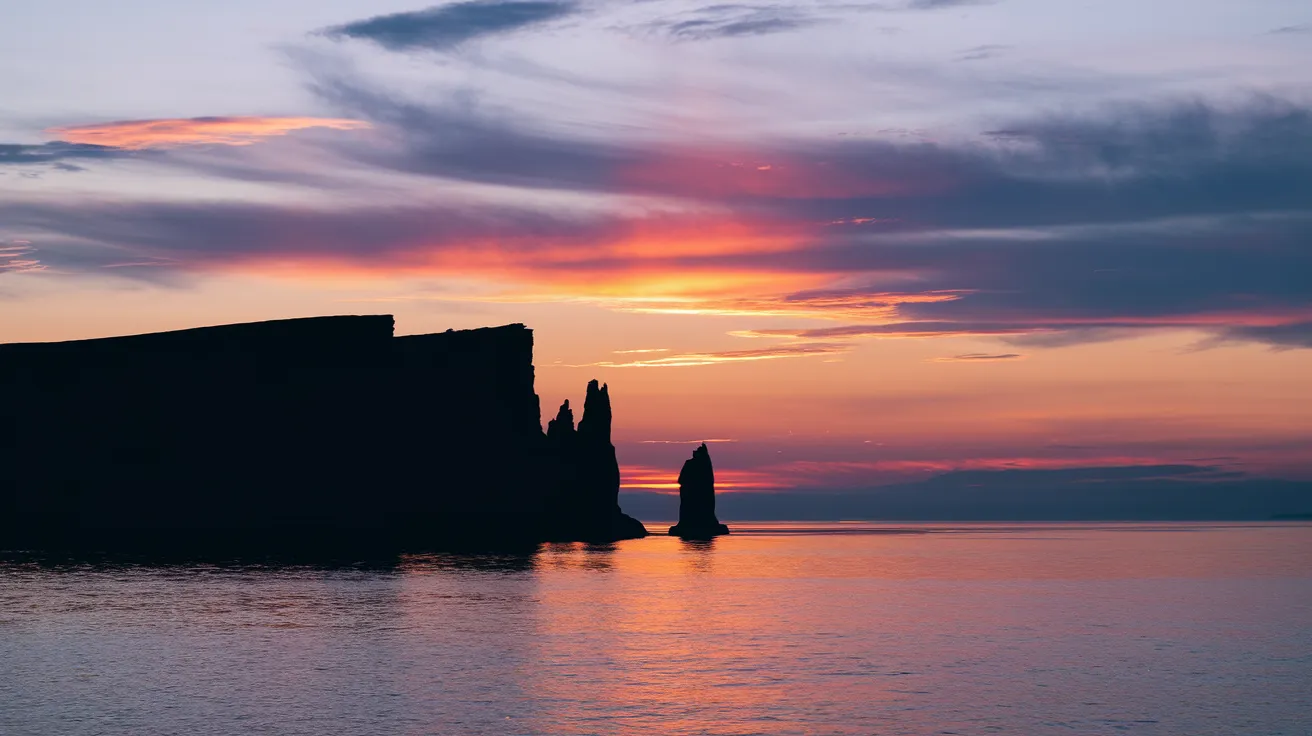
Neolithic Sites and Solstice Alignments
Orkney's Neolithic inhabitants, who built the remarkable monuments of the Heart of Neolithic Orkney UNESCO World Heritage Site around 5,000 years ago, were keenly attuned to celestial cycles. Several key sites show potential alignments with the solstices:
- Ring of Brodgar: This magnificent stone circle, one of the largest in Britain, is thought to have alignments related to both solar and lunar events. Some researchers suggest specific stones align with the Summer Solstice sunrise, indicating its importance as a ceremonial gathering place during midsummer. Standing within the circle as the Simmer Dim unfolds is an unforgettable experience, connecting you directly to millennia of human observation.
- Stones of Stenness: While primarily associated with midwinter alignments, these towering monoliths likely played a role in year-round ceremonies. Their dramatic silhouettes against the lingering twilight sky make Stenness a powerful place to contemplate the turning of the seasons.
- Maeshowe: This famous chambered cairn is precisely aligned to capture the light of the setting midwinter sun. While its primary alignment is with winter, visiting Maeshowe provides context for the sophisticated astronomical knowledge possessed by Orkney's Neolithic builders, who undoubtedly marked the summer solstice as well.
Experiencing the solstice at these ancient sites offers a profound connection to the people who built them, sharing a moment dictated by the same celestial clockwork they observed thousands of years ago.
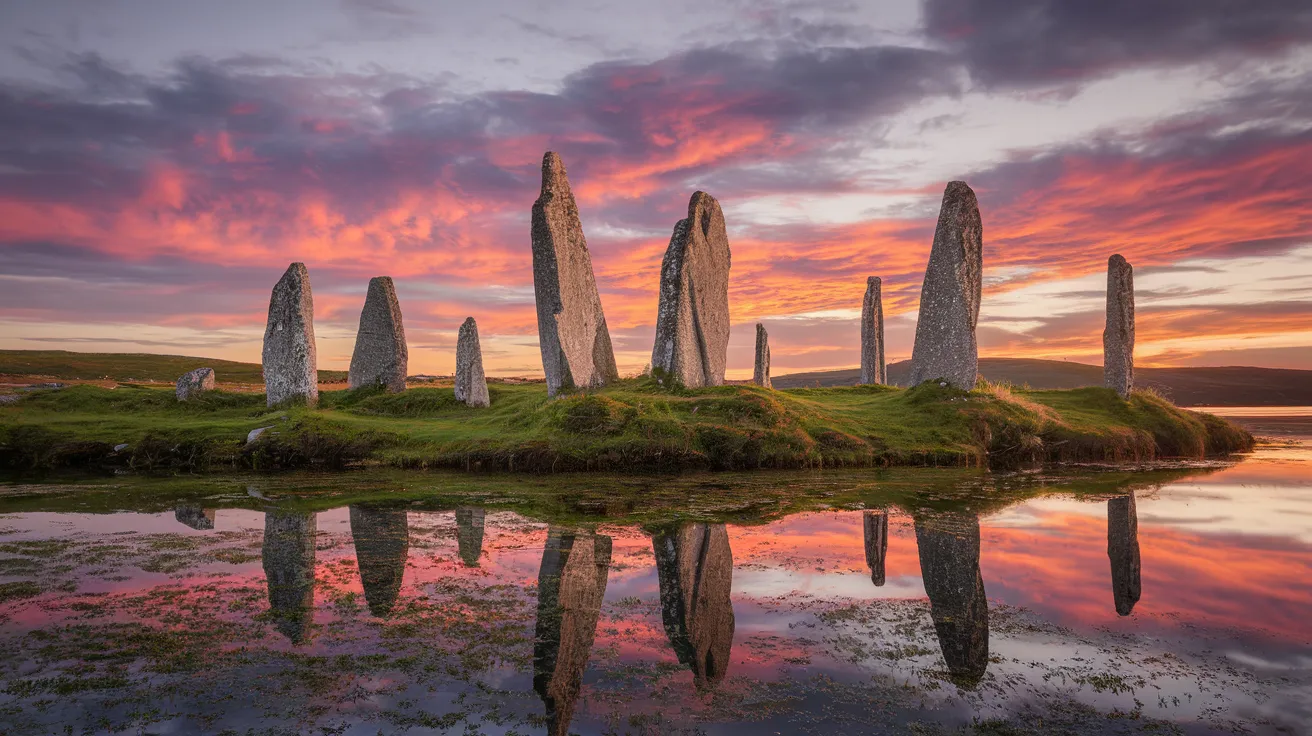
Where to Witness the Midsummer Magic
Beyond the main Neolithic sites, Orkney offers numerous vantage points to appreciate the Simmer Dim:
- Ring of Brodgar & Stones of Stenness: The classic choice. Both sites are freely accessible (though check Historic Environment Scotland for any specific solstice access arrangements). Arrive early for sunrise or stay late after sunset for the best light. The atmosphere is often quiet and contemplative.
- Coastal Locations: Places like Yesnaby cliffs, Marwick Head, or the Brough of Birsay offer dramatic settings where the twilight sky meets the sea. Watching the sun dip briefly below the horizon over the Atlantic is spectacular.
- Wideford Hill: For panoramic views, the climb up Wideford Hill near Kirkwall rewards you with sweeping vistas across the islands, perfect for appreciating the vastness of the Simmer Dim sky.
- Northern Isles: Islands like Westray or Papa Westray, being further north, experience an even more pronounced Simmer Dim.
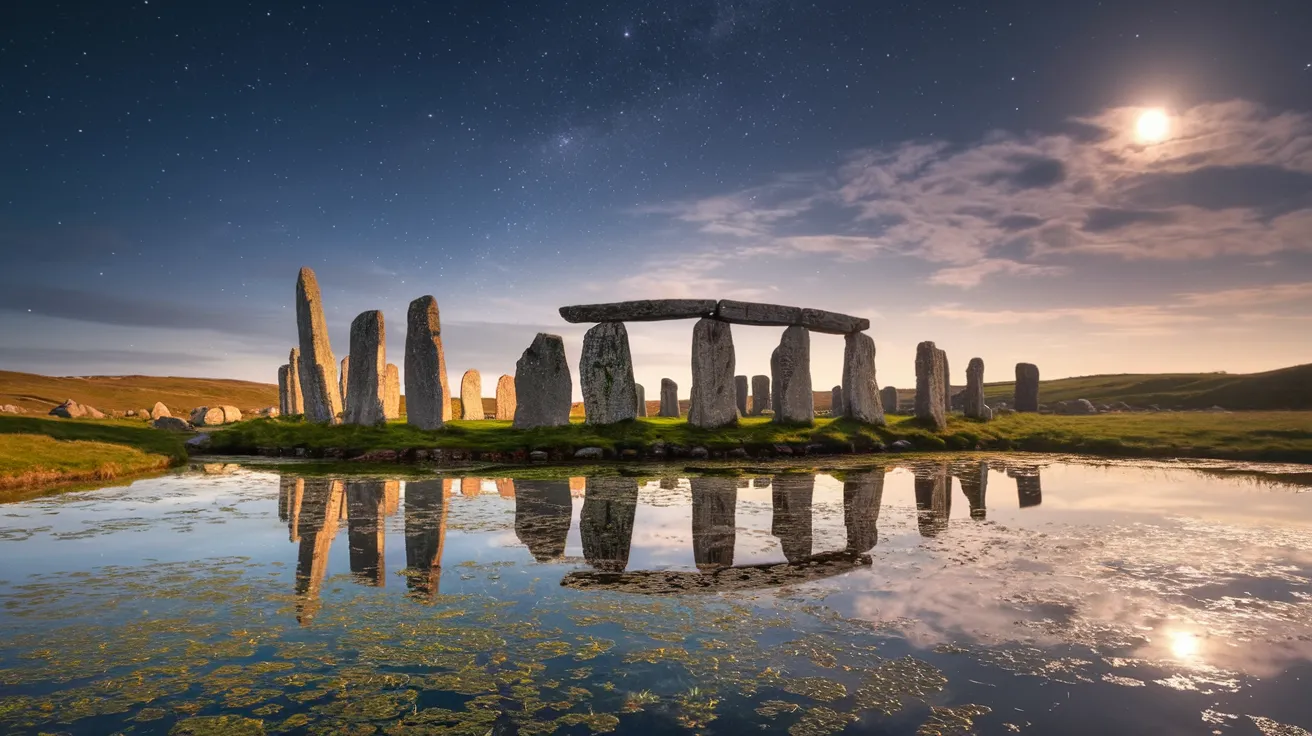
Traditions and Celebrations
While large, organised solstice celebrations at the stone circles are less common now due to site preservation concerns, the midsummer period remains significant in Orkney. Historically, Norse traditions linked the solstice to the god Baldur, celebrating the peak of light before the sun began its decline. Bonfires were once common on Johnsmas Eve (June 23rd), though largely suppressed over time.
Today, the solstice often coincides with the internationally renowned St Magnus International Festival, a major arts festival held in late June, bringing world-class music, theatre, and arts events to Orkney. Attending a dawn concert or an event in a historic venue during the festival period adds another layer to the midsummer experience. Smaller, informal gatherings might still occur at the stone circles, but visitors are encouraged to experience these sites respectfully.
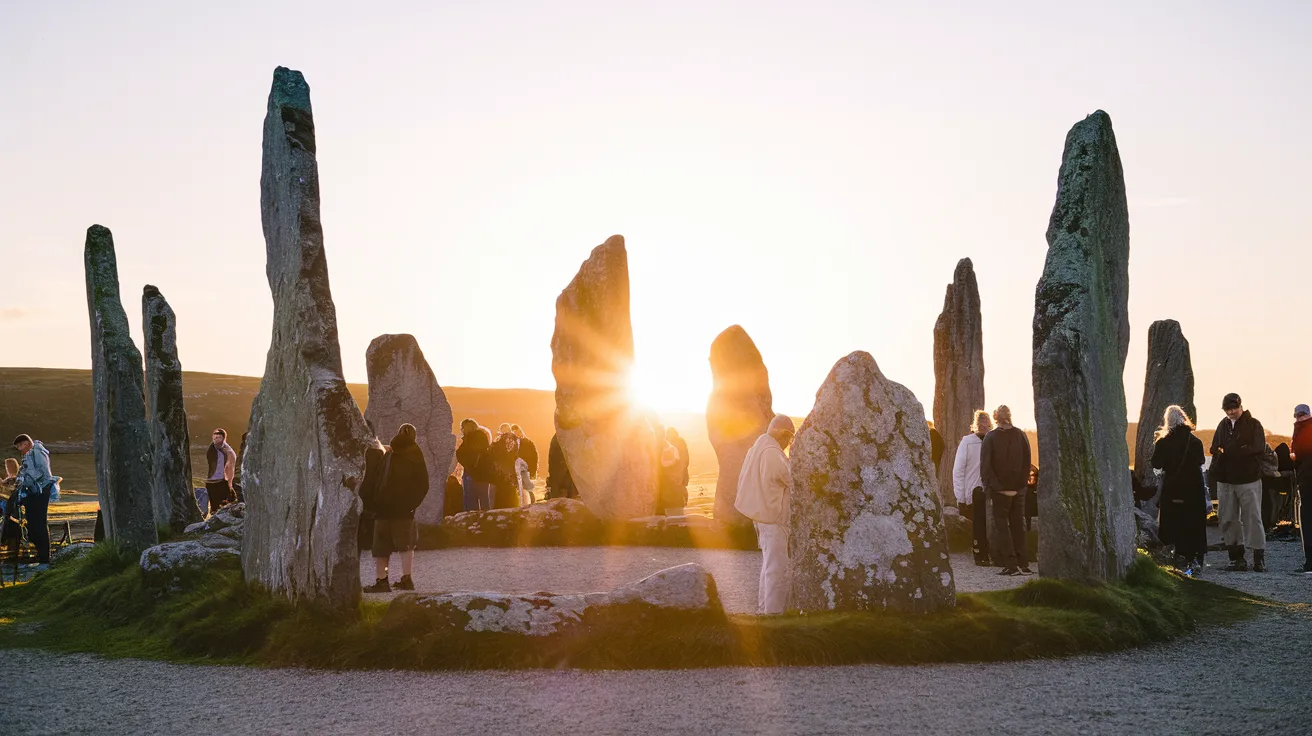
Folklore of the Long Light
Orkney's folklore is rich with tales reflecting the dramatic seasonal shifts. The eternal battle between the Sea Mither (spirit of summer seas) and Teran (spirit of winter gales) explains the changing conditions. Midsummer was a time when the Sea Mither's calming influence was strongest. The long twilight hours were also associated with otherworldly beings; tales of selkies (seal-folk) shedding their skins on lonely beaches or trows (earth spirits) emerging from their mounds seem more plausible under the strange light of the Simmer Dim.
To find videos capturing this unique light, search YouTube for "Orkney Simmer Dim Timelapse" or "Summer Solstice Ring of Brodgar".
Tips for Your Solstice Visit
- Dress in Layers: Even in June, Orkney can be cool and windy, especially at night or dawn. Pack waterproofs, windproofs, hats, and gloves.
- Embrace the Light: Plan activities for the extended daylight hours. Coastal walks or visits to ancient sites take on a different character in the late evening or early morning light.
- Photography: Bring a tripod for low-light shots during the Simmer Dim. Experiment with long exposures to capture the soft light and moving clouds or water. The 'golden hour' lasts much longer.
- Accommodation: Book well in advance, as midsummer is a popular time. Consider staying near the Heart of Neolithic Orkney (Stromness or Finstown offer good bases) for easy access to the main sites. Check Orkney Stays for options.
- Respect the Sites: If visiting the stone circles during solstice, be mindful of the environment and any other visitors seeking a quiet experience. Follow guidance from Historic Environment Scotland.
Frequently Asked Questions
What exactly is the Simmer Dim?
It's the period around the Summer Solstice in northern latitudes like Orkney where the sun doesn't dip far enough below the horizon for full darkness, resulting in extended twilight through the night.
When is the best time to experience it?
The weeks surrounding the Summer Solstice (approx. June 21st) are peak Simmer Dim season, from late May to mid-July.
Are there official events at the Ring of Brodgar for the solstice?
Large official events are rare now due to conservation concerns, but the site is usually open. Check with Historic Environment Scotland for any specific access information.
Does it ever get completely dark in Orkney in summer?
Around the solstice, no. There's always some level of twilight, even at midnight.
Is the St Magnus Festival always during the solstice?
It's held annually in late June, often overlapping with the Summer Solstice period.
Experiencing the Summer Solstice and the Simmer Dim in Orkney is truly unique. It’s a time when the islands' ancient past feels incredibly present, illuminated by an otherworldly light. Standing amongst 5,000-year-old stones as the sun refuses to fully set is a powerful reminder of Orkney's enduring magic and its deep connection to the cosmos.

